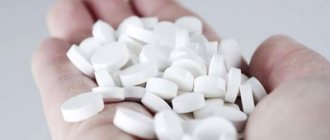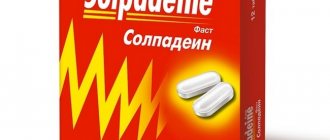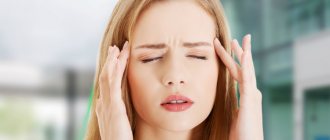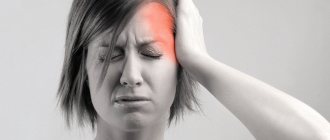Headaches are one of the most common complaints with which patients consult a doctor. Almost 90 percent of people experience headaches every year, and almost everyone will experience at least one episode of headache at some point in their life.
Most people experience primary headaches, which are usually mild in intensity but can be severe enough to affect mood and quality of life. Unlike secondary headaches, which are caused by pathological processes or trauma, and they are usually more intense, and may be accompanied by various neurological symptoms, primary headaches are not the result of any disease.
Types of headaches
At least 14 types of headaches are currently classified, but there are several main types of primary headaches:
- Tension headache : The most common type of primary headache, more recently called tension headache. Tension headaches can be episodic or chronic. And this type of headache may occur in up to 40% of patients.
- Cervicogenic headache : A less common but also very common type of primary headache is cervicogenic headache. Although studies have reported varying incidences of this type of headache, this type of headache still occurs in 16-36% of headache patients.
- Migraine : There are two different types of migraine: with aura and without aura. People who suffer from migraines with aura experience visual disturbances as a precursor to the attack, such as blurred vision or tunnel vision, or seeing zigzag lines or stars. In contrast, migraines without aura, which are more common, accounting for 8 to 16 percent of the headache population, are characterized by the absence of any visual, sensory or speech disturbances.
A person can have several types of headaches at the same time, either simultaneously or at different times. For example, working at a computer for long periods of time can cause tension headaches, and drinking alcohol later after celebrating the completion of a project can trigger a migraine attack.
According to the International Headache Society, each type of primary headache has specific characteristics.
Tension type headache
- A. Having at least 10 episodes occurring within a month and at least within three months.
- B.Headache lasting from 30 minutes to 7 days
- C. Headache has at least two of the following symptoms:
- Two-way localization
- Tightening sensation (non-pulsating)
- Low to moderate intensity
- Does not worsen after normal physical activity such as walking or climbing stairs
- D. Both of the following are present:
- No nausea or vomiting, but anorexia may occur
- No more than one of the following: photophobia or phonophobia (sensitivity to noise)
- E. No connection with other diseases (for example, diseases of the vascular and nervous system)
Cervicogenic headache
- A. Pain is localized in the neck and occipital region and can radiate to the forehead, orbital region, temples or ears.
- B. The pain is moderate and not throbbing; as a rule, it begins from the neck, can have varying duration, and is permanent.
- C. Signs and symptoms of neck involvement include:
- Provocation of pain by incorrect movements of the neck or being in an uncomfortable position for a long time or the presence of external pressure on the neck or occipital region.
- Ipsilateral neck pain
- Decreased neck range of motion
- D.Other characteristics:
- Sometimes a history of trauma
- Female
- Significant effect from taking indomethacin (NSAID) or ergotamine
Migraine (without aura)
- A. At least headaches meet criteria B-D
- B. Duration of headache attacks from 4 to 72 hours
- C. Headache has at least two of the following symptoms:
- One-sided nature
- Pulsating Plan
- Moderate to severe intensity
- Worsened by normal physical activity (walking up stairs)
- D. During a headache, at least the following symptoms are present:
- Nausea and/or vomiting
- Photophobia and phonophobia
- E. Other causes of headache have been excluded
Important
Headaches are no small matter, warn Dutch doctors. They argue that it may be a sign of focal brain lesions, which can be detected with careful examination. After testing about 300 people who complained of headaches, as well as 140 people from the comparison group, on a magnetic resonance imaging scanner, the scientists identified 60 foci of cerebral infarction in 31 experiment participants who complained of migraines. At the same time, in patients with headaches, heart attacks were detected seven times more often.
What Causes Tension Headaches?
Although there is no definitive scientific evidence as to which structures or processes cause tension headaches, several triggers have been identified. The most common triggers: stress; depression and anxiety; poor posture; working in an awkward position or working in one position for a long time; lack of physical activity; changes in sleep patterns or usual diet (such as skipped meals or interrupted sleep); sometimes, hormonal changes associated with menstruation, pregnancy, or menopause; drugs used for other conditions, such as depression or high blood pressure; and overuse of headache medications.
It is a common misconception that tension headaches are only related to stress, and if stress is eliminated, the headache will also be eliminated. However, despite the lack of scientific answer to the mechanism of development of tension headaches, it is clear that risk factors have to do with lifestyle and occupational habits, as well as stress. Numerous studies have also shown that dysfunction of the muscles that connect the first two cervical vertebrae to the skull and the muscles that connect the shoulder blades and collarbones to the head and neck can cause a type of tension headache.
What Causes Cervicogenic Headache?
There is reliable evidence that dysfunction of the joints of the first three cervical vertebrae can lead to the development of headaches. In addition, there is ample evidence that the incidence of headaches after spinal cord injury (most commonly a car accident) is as high as 80 percent. It has been proven that even minor injuries during a motor vehicle accident can cause damage to the neck joints, discs and muscles, which can lead to neck pain and/or headaches.
Interesting
Although the main causes of headaches are poor diet, stress and fatigue, dental problems can also cause headaches. The basis of headaches is malocclusion and an incomplete set of teeth. If the headache is localized in the area of the eyeballs, you notice pain in the masticatory muscles, grind your teeth, feel clicking in the jaw joints, suffer from pain or ringing in the ears, pain in the neck or lower back, experience dizziness, consult a dentist .
What causes migraines?
All types of migraines are caused by abnormal brain activity, which is triggered by stress, certain foods, environmental factors, or as a result of changes in hormone levels, sleep disturbances, or even exercise levels. However, the exact chain of development of migraine is not yet clear. Some migraines may develop with prodromal symptoms called aura, which include various visual disturbances such as blurred vision, tunnel vision, or the patient seeing zigzag lines or stars. More often, however, there are no warning symptoms and only an experienced doctor can diagnose migraine and prescribe appropriate treatment.
How can you help yourself?
If a patient suffers from any form of migraine, it is important that he sees a doctor for proper diagnosis and treatment. However, if the patient has tension headaches or cervicogenic headaches, the patient can help himself by doing the following:
- Maintaining an active lifestyle.
- Avoid placing your neck in uncomfortable positions.
- Maintain good posture.
- You should avoid remaining in one position for too long. It is necessary to take frequent breaks.
- It is desirable to improve the ergonomics of the workplace.
- Don't skip meals.
- Enough sleep.
- Seek help if symptoms do not improve
- It is necessary to keep a headache diary and the entries will help identify headache triggers and subsequently eliminate these triggers.
Physical exercise
Exercise can be an effective treatment tool for tension-type headaches and cervicogenic headaches. In addition, other treatments are very effective.
- Myofascial release allows you to relieve muscle spasm and act on myofascial trigger points
- Mobilization of the joints of the cervical vertebrae using gentle manual therapy techniques.
- Strengthening the neck muscles, which are necessary to maintain a “neutral” posture.
- Postural reformatting to restore normal posture
- Assess and correct other factors that may interfere with maintaining a neutral neck position, such as stiffness in the lumbar or thoracic spine, weakness of the arms and shoulders, or weakness of the underlying muscles that affect posture.
- Ergonomic workstation and teaching the patient the correct movements to minimize the impact on the spine.
When should you see a doctor?
Headaches can be a symptom of serious conditions.
If you have some symptoms, you should seek emergency medical help:
- The pain is new and interferes with daily activities.
- The headache came on suddenly.
- The patient describes the pain as severe.
- The headache is accompanied by problems with speech, vision, movement of the arms or legs, loss of balance, confusion, or memory loss.
- The headache gradually gets worse over a 24-hour period.
- The headache is accompanied by fever, neck stiffness, nausea and vomiting.
- Headache occurs after a head injury.
- The headache is intense and localized in one eye, with corresponding redness of the eye.
- The patient is over 50 years old and his headaches have become more severe recently and are accompanied by impaired vision and pain when chewing.
- If you have certain symptoms, you should make an appointment with your doctor:
- Headaches interrupt sleep.
- The headache lasts more than a few days.
- Headaches are worse in the morning.
- There was a change in pain intensity.
- Headaches began to appear more often for no obvious reason.
How to Treat a Headache Based on Symptoms
If signs of an incipient headache appear, you should analyze what the symptom may be as a consequence. A severe headache is often an undeniable sign of a disease such as migraine (hemicrania). But you cannot make such a diagnosis yourself, much less prescribe treatment for yourself.
How to save yourself from a migraine
If signs of an obsessive and worsening headache become more common, you need to seek medical help. Experts, guided by analyzes and research, will make a diagnosis and prescribe treatment. It should be noted that even with significant improvements, up to the complete disappearance of pain, periodic visits to the doctor are necessary. This will help adjust the treatment.
To relieve migraines of mild and moderate intensity, you should follow seemingly simple tips: you need to rest more, paying attention to proper sleep. The room you are in must be ventilated. If you feel the pain starting to set in, try to rest in a quiet and dark room with a normal temperature for you. You can also prevent a wave of pain by drinking a cup of coffee and a tablet of nonsteroidal anti-inflammatory drugs (NSAIDs).
Can't cope without strong medications? To reduce spasm and eliminate pain, you should take a powerful analgesic. Experts generally recommend products such as Ibuprofen or Ketoprofen. Often persistent migraine headaches are accompanied by nausea and vomiting. To get relief, in this case, doctors advise using Metoclopramide and Diazepam tablets. Please note that only a specialist can select medications specifically for your case.
What if it's a cold?
A cold may also be the cause of a persistent headache. And if at the height of the disease a person realizes who is to blame for the trouble, then when the main symptoms in the form of fever and severe runny nose pass, the question remains open. What should be done for sure to improve the situation is to cure the cold completely. While you are undergoing treatment, the following tips will help ease your condition. A cup of coffee, or rather the caffeine it contains, can relieve the spasm a little. If the pain is severe, you should resort to medications. Here doctors suggest taking an Ibuprofen or Diclofenac tablet, or another drug from a series of non-steroidal anti-inflammatory drugs that is suitable for you.
You should pay attention to the fact that most headache medications are based on paracetamol and acetylsalicylic acid. Follow the dosage strictly, otherwise your liver may be damaged.
Drink plenty of fluids. By liquid we mean pure water. When drinking coffee and pills, do not forget that many drugs are diuretics. Water balance must be maintained.
The reason lies in intoxication
Everyone could notice a certain relationship that when poisoning and intoxication with any product, nausea, pain in the gastrointestinal tract, etc. are also accompanied by a headache. The relationship here is clear and we also need to fight this pain.
First, determine what caused the poisoning and try to remove toxins from the body. Poisoning is possible from alcoholic beverages, from an overdose of a medication, caused by the smell of paint, and much more.
With a mild degree of intoxication, sometimes it is enough to take a bath or shower and relax and get some sleep.
Again, remember the rule of replenishing water balance. For moderate intoxication, take an NSAID tablet. If the situation is complicated by nausea and vomiting, take Diazepam or Metoclopramide. In case of severe intoxication, do not attempt self-medication; consult a doctor immediately. Author: K.M.N., Academician of the Russian Academy of Medical Sciences M.A. Bobyr








